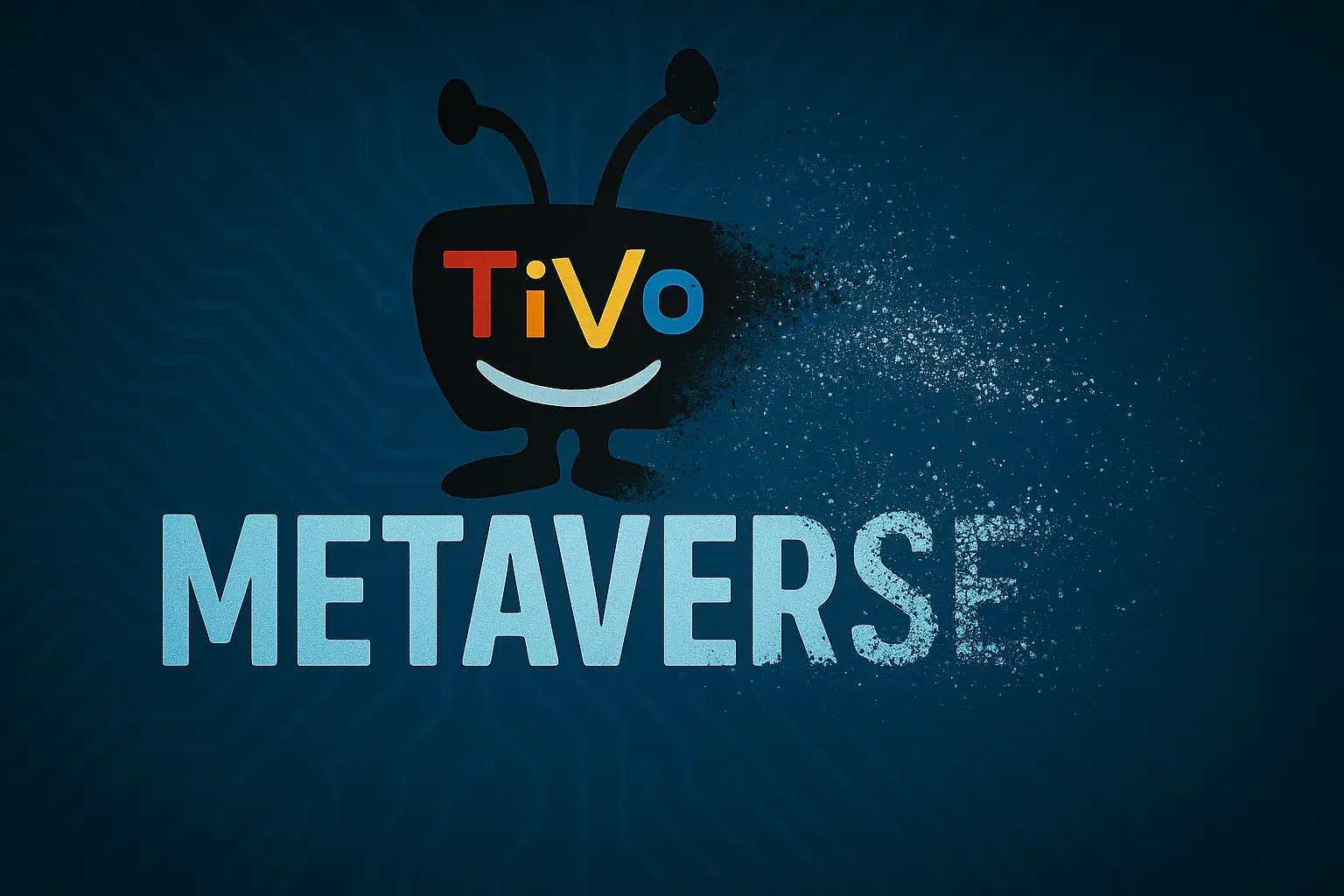Let's Be Honest: The "Metaverse" Is Starting to Sound Like TiVo

Remember TiVo? Not the DVR box itself, but the verb. "Did you TiVo it?" was everywhere for a moment. It was futuristic, flashy, and for a while, it felt like the future of TV had arrived. But while the brand faded from the spotlight, the technology it introduced — pause, record, rewind live TV — became standard, evolving and embedding itself into how we consume media today.
Now think of the metaverse. It had its TiVo moment. For a stretch, you couldn't scroll through tech headlines without running into bold predictions about our future lives in fully immersive digital worlds. Facebook even bet the house, renaming itself "Meta." And yet, just like TiVo, the buzz fizzled. The word lost its edge.
But here's the twist: the tech didn't die.
In fact, the core technologies behind the metaverse — 3D environments, real-time interaction, immersive UX, spatial computing — have quietly kept maturing. And now they're powering something far more grounded and impactful: real-time behavioral analytics in 3D spaces.
That's where 3D analytics comes in — and it's not just about virtual headsets anymore.
Beyond the Hype: What 3D Analytics Really Means
3D analytics isn't a future concept. It's here. At Mattertraffic, we focus on capturing how people move, look, explore, and interact inside digital 3D environments — whether they're virtual walkthroughs of homes, factory simulations, or training scenarios in VR. It's like having Google Analytics, but for entire immersive spaces.
Instead of asking "What page did they click on?" we're now asking, "Where did they walk? What did they look at? What drew their attention? What did they ignore?"
That's an entirely different dimension of insight.
We're talking about tracking position, orientation, object interactions, time spent in zones, even whether someone got lost or confused in the layout. And when that's done in real-time across thousands of users, it opens up a new layer of intelligence for businesses.
Real Use Cases That Are Already Happening
In Real Estate
Agents and developers use digital twins of properties to let buyers "walk" through spaces online. With 3D analytics, they can see which rooms get the most attention, where visitors hesitate, and which features spark engagement. It's no longer guessing what sells — it's knowing.
In Retail
Virtual stores, showrooms, and product demos are getting smarter. Want to know if your new store layout in a VR shopping experience leads people to your key products — or if they walk right past them? 3D analytics gives you that clarity. It's like heat mapping a real store, without needing the physical space.
In Manufacturing and Robotics
Digital twins aren't just eye candy — they're operational tools. Engineers simulate workflows, track employee movement, and optimize machinery layouts in real time. The analytics layer tells them not just how the system behaves, but how people engage with it.
In Training and Education
Simulation-based learning is powerful — but how do you evaluate performance in an immersive training module? 3D analytics shows whether the trainee looked in the right direction, performed actions in the correct sequence, or missed something critical. It's precise feedback, even in complex environments like aviation or emergency response.
Why This Isn't Just Another Dashboard
Yes, the data can go into a dashboard — but the real value is what you do with it.
At Mattertraffic, we focus on making the data actionable. Heatmaps, show you crowd density in a virtual event. Path mapping reveals user drop-off points. Interaction data pinpoints what gets attention — and what doesn't.
And unlike traditional analytics, which treat users like clicks on a flat map, 3D analytics treats them like people navigating real spaces. Because that's exactly what they're doing.
The Technical Foundation: What's Under the Hood
To make this work, there's a lot going on behind the scenes:
- Real-time data collection across platforms like Unity, Unreal Engine, and WebGL
- Position and orientation tracking using XYZ coordinates, head direction, and even gestures
- Data compression and streaming using tools like WebSockets, gRPC, and edge computing to keep things smooth
- Modular plugin architecture that adapts across platforms and environments
- Privacy and compliance built-in from day one — because none of this matters if users can't trust it
What makes it exciting is that it's all built to scale. We're talking about collecting millions of behavioral signals without slowing down the experience.
So, Is the Metaverse Dead?
No — but the name might be.
What's really happening is this: the flashy concept of a "metaverse" is quietly being replaced by highly practical, high-ROI technologies that solve real problems. 3D analytics is one of the strongest threads pulling that fabric forward.
Whether you call it the metaverse, spatial computing, immersive UX, or just the next evolution of digital interaction — the underlying tools are very real, and they're here to stay.
Final Thought
Like TiVo, the buzz might fade. But the core ideas — the innovations that let us pause, replay, and understand human behavior in a new dimension — are becoming part of the infrastructure of the digital world.
That's why I built Mattertraffic. Because while everyone else was talking about what the future could look like, we were already building the systems to measure how it actually feels to be in it.
And that's a future worth tracking.
Read on Medium:
https://medium.com/mattertraffic/lets-be-honest-the-metaverse-is-starting-to-sound-like-tivo-28c6a201663d
